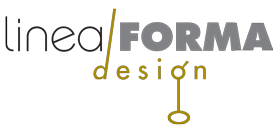I’ve worked in 3D for over ten years now. The process really is about as close to magic as I’ve experienced. It may not provide the best solution to every problem, but it does provide amazing photoreal results. My software of choice for creating 3D imagery for marketing tools is Autodesk Maya, for its wealth of modeling, rendering and special effects tools. I build just enough of the model to cover all my requirements for the rendered story, typically the surfaces, so…Maya makes magic. For CAD quality products to be manufactured, I utilize Autodesk Inventor, Fusion 360 and others.
3D can be used as a replacement for photographing or illustrating a product. So why use a 3D digital model instead of either of those traditional methods of presentation?
3D vs. Photography: No doubt, using a camera in a pristine studio environment will yield the most perfect image money can buy, especially with the level of resolution that digital photography now permits. And I recommend it. But here are a few instances making 3D models might be a better option than a photograph:
I’ve made models for numerous products that were in prototype stages, but not quite ready for tight promotional deadlines. The 3D digital models were used for brochures and trade show presentations before the real product was built.
Below: A rendering of the Proxense personal ID key fob made before prototyping allowed the early generation of marketing materials and investor presentations.
I’ve used 3D models to update a photo that was created in the past and needed to be modified, but the original scene couldn’t be recreated.
Below: The red truck 3D model was added to the original scene from 1983.

My most frequent use of 3D models is to present a photoreal image of a product that cannot be photographed. It may perhaps be too large or installed underground or in, shall we say, not the most attractive environs.
Below: The actual environs would be hundreds of feet underground. A 3D cutaway model gives a clear view of product features. 
3D models are also the method of choice when the object to be photographed has to defy the laws of nature in ways that are too costly to reproduce in a studio, like floating and moving in space, for example.
Below: Four still frames from an instructional video–moving through a pipette tip in space.

In some cases, 3D models are simply deemed more cost-effective. Beyond the cost of building the 3D models to just the level of detail needed, rendering them from numerous angles and details in a “virtual studio” becomes considerably less expensive over time than creating the scene in a photo studio, and rearranging it repeatedly. And all the “real world” clutter is eliminated in a 3D scene without the many hours of retouching or rearranging needed in actual photo shoots.
3D vs. Illustration: I’ve been a technical illustrator since I was in high school, and I love to do it. It’s the perfect solution for infographics, price lists, manuals and instruction sheets. Whenever the image is only used from one angle, and not intended to change its viewpoint, and is not meant to look photo-real, but still be clear and accurate, I will always recommend an isometric illustration, or something similar. But if the client wants to see the product from several angles, each new angle is a brand new illustration starting all over, and the cost advantages diminish. With a 3D model, I just aim the camera from a different angle, adjust my lighting, and render it again.
My Digital Warehouse
Once I build a 3D model, I can bring it into my “virtual studio” and shoot it from any angle, with any type of lighting, background, texture, material, or detail variations, for any type of result I want, and if it needs to defy the laws of nature, it just doesn’t care. It’s like a honey badger that way. And when it’s job is done, I move it to my “digital warehouse” where I store it for possible future use, double backed-up. No forklift needed.
Photography, illustration and 3D models all have a place in the process. I use them all and recommend them all. 3D is the newest tool I have, and I love it, but I don’t pick it first unless it is the right tool for the job.
Share this:

